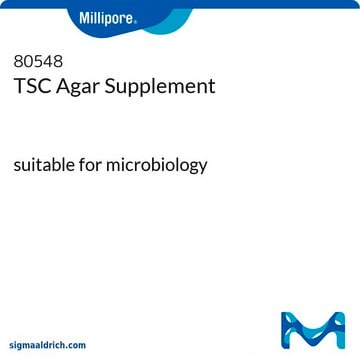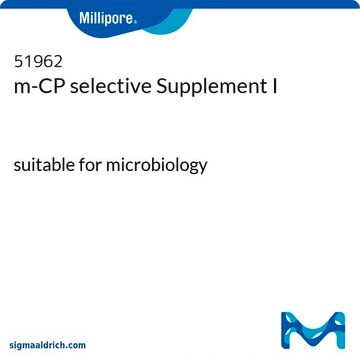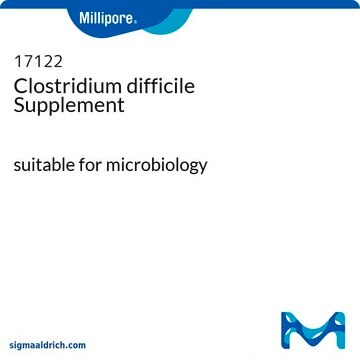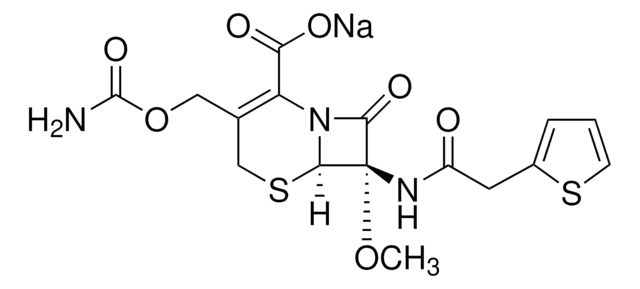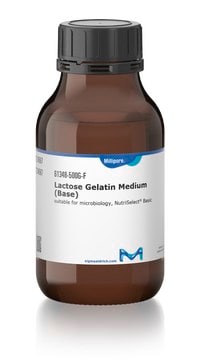30020
D-Cycloserine
Sinónimos:
R-4-Amino-3-isoxazolidinone, (R)-4-Amino-3-isoxazolidone, 4-Amino-3-isoxazolidinone
About This Item
Productos recomendados
biological source
synthetic
Quality Level
form
powder
potency
≥900 μg per mg
color
white to off-white
mp
147 °C (dec.) (lit.)
antibiotic activity spectrum
Gram-negative bacteria
Gram-positive bacteria
mycobacteria
mode of action
cell wall synthesis | interferes
storage temp.
−20°C
SMILES string
N[C@@H]1CONC1=O
InChI
1S/C3H6N2O2/c4-2-1-7-5-3(2)6/h2H,1,4H2,(H,5,6)/t2-/m1/s1
InChI key
DYDCUQKUCUHJBH-UWTATZPHSA-N
¿Está buscando productos similares? Visita Guía de comparación de productos
Categorías relacionadas
General description
application
Biochem/physiol Actions
Partial agonist at the glycine modulatory site of NMDA glutamatergic receptors; antibiotic against Gram-negative bacteria.
Mode of Resistance: D-Ala transport interference.
Packaging
Other Notes
Storage Class
11 - Combustible Solids
wgk_germany
WGK 2
flash_point_f
Not applicable
flash_point_c
Not applicable
ppe
Eyeshields, Gloves, type N95 (US)
Certificados de análisis (COA)
Busque Certificados de análisis (COA) introduciendo el número de lote del producto. Los números de lote se encuentran en la etiqueta del producto después de las palabras «Lot» o «Batch»
¿Ya tiene este producto?
Encuentre la documentación para los productos que ha comprado recientemente en la Biblioteca de documentos.
Los clientes también vieron
Nuestro equipo de científicos tiene experiencia en todas las áreas de investigación: Ciencias de la vida, Ciencia de los materiales, Síntesis química, Cromatografía, Analítica y muchas otras.
Póngase en contacto con el Servicio técnico




